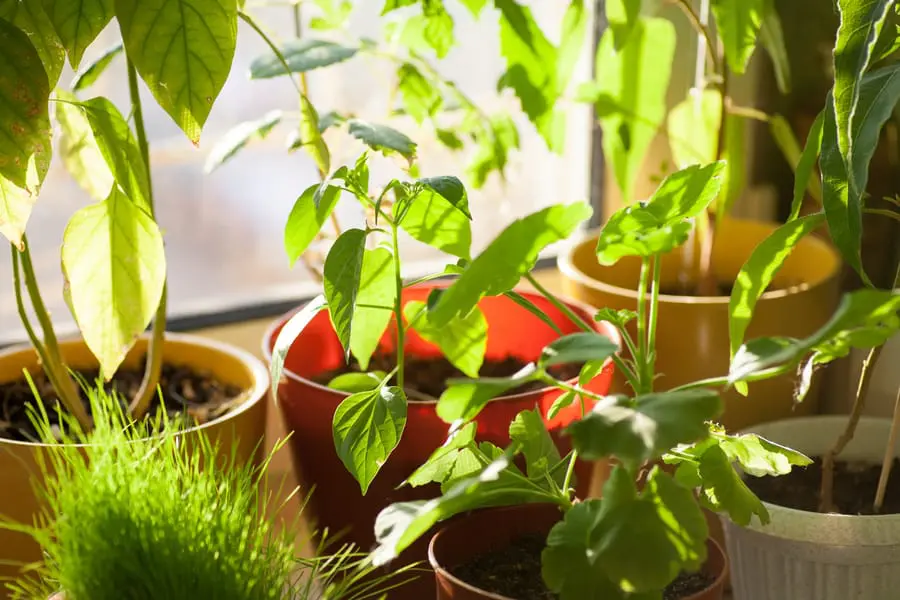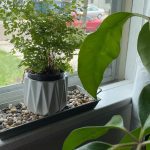
Some houseplants need direct sunlight and others need indirect, but what does that really mean? We set out to discover if the plants we were growing in “direct” light were truly getting the rays they need. Here’s what we found.
Is light through a window considered direct sunlight? It depends. If the sun’s rays directly hit the plant – such as through a south-facing window – this is considered direct sunlight. If the sun is bright but the rays don’t directly hit the plant, this is considered indirect light.
The definitions for direct and indirect sunlight can be a little confusing when dealing with indoor plants. Let’s take a deeper look at how light works when it’s filtered through windows.
Direct vs. Indirect Light Indoors
Most varieties of houseplants require indirect light, which is why they’re optimal for growing indoors. Succulents, cacti, croton, and a few other varieties may tolerate direct light. But for the most part, indirect light wins for growing plants in your home.
If the sun’s rays shine directly through the window and land on the plant’s leaves – this is direct sunlight. Most areas in your home, except for south-facing windows, receive indirect light.
Put your hand in between the window and the plant during the hottest part of the day. Do you feel the sun’s rays directly hitting your skin? If so, this is direct sunlight.
Indirect light is when the sun’s rays are reflected off something else first before hitting the plant. An area of indirect sunlight will be brightly lit, but there won’t be direct contact with the sun’s rays.
Importance of Direction
You can control the amount of direct or indirect sunlight your house plants receive by placing them in a window facing the appropriate direction. Understanding the location of windows in your house is the best way to know where a plant should live for optimal growth.
South-Facing Windows: Direct Sunlight
The light that enters through south-facing windows is the strongest and brightest. This is the place for any plant that requires “direct” sunlight indoors. Plants in southern windows receive full sunlight from the time the sun rises until it sets in the evening.
South-facing windows can become quite hot, however, so plants that can’t tolerate full or direct sun can scorch or burn during the summer months. Flowering plants typically require lots of sun to produce blooms and thrive in southern exposure.
Always read the care instructions for your specific plant. Don’t assume just because it blooms that it will be okay in a south-facing window. Some flowering plants – such as Peace Lily – prefer lower light for most of the year.
West-Facing Windows: Direct & Indirect Sunlight
West-facing windows provide direct sunlight for part of the day, although not as long or as intense as south-facing windows. Plants in Western windows receive about four to six hours of bright, direct sunlight each day. The light is considered indirect during the morning and early afternoon hours.
Direct sunlight in west-facing windows begins in the mid-afternoon and lasts until the sun sets in the evening. The intense afternoon sun raises the temperature in west-facing windows, so plants that scorch easily may need to be placed a few feet away from the glass.
East-Facing Windows: Direct & Indirect Sunlight
East-facing windows get a strong dose of direct sunlight in the early morning hours, followed by indirect sun later in the day. Plants that require moderate, bright, indirect light perform best in Eastern windows.
Although the morning sunlight in Eastern exposure windows is direct, it’s much less hot than the midday or afternoon sun. This makes scorching or burning of leaves less likely. East-facing windows provide an ideal light situation for most types of house plants, except for very low-light plants.
North-Facing Windows: Low Indirect Sunlight
Rooms with north-facing windows NEVER receive direct sunlight. Instead, they provide a cool, shaded area of indirect light perfect for ferns and other plants with low light requirements.
During the winter months, even low-light plants may need supplemental lighting in north-facing windows. Or simply move your plants to a sunnier spot until spring. North-facing windows receive the least amount of light, so keep an eye on plants grown here to make sure they’re getting enough sun.
Plants that require direct or bright sunlight should never be grown in north-facing windows. There won’t be enough light for them to thrive.
Filtering Direct Light Through Windows
Can you turn direct sunlight through a window into indirect sunlight? Yes! If necessary, it is possible to filter direct light and turn it into more indirect light for your plants.
If all you have available is a south-facing window, for example, but you want to grow moderate- or low-light plants, try these tips:
- Place a sheer curtain over the window. Use a curtain that allows the sun to shine through but filters out some of the harsh rays.
- Move the plants a few feet away from the window glass, allowing them to bask in the bright sun without being hit by the direct rays.
- Apply a window film that blocks UV rays. These easy-to-apply films block out 45 – 85 percent of sunlight heat in the summer, creating a more hospitable environment for house plants. As a bonus, they can also save on energy costs to heat and cool your home. Click here to see the one we recommend on Amazon.
Related Questions
Do plants need direct sunlight or just light? Again, it depends on the variety. Most houseplants thrive with at least four to six hours of bright, indirect sunlight each day. Some sun-loving plants – like succulents and cacti – can handle direct sunlight, while other types require only low levels of light.
How do you know if your plants aren’t getting enough sun? They’ll become leggy with pale yellow or green leaves, growth will slow or stop, and flowering plants will no longer flower. Variegated leaves may turn a solid color, and the spaces between leaves will be larger than normal.
We’ve also written an in-depth article on determining if your plant is getting enough sun to fully answer this question.





